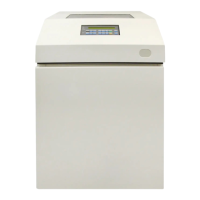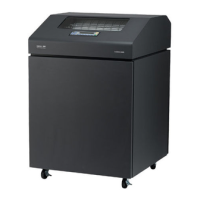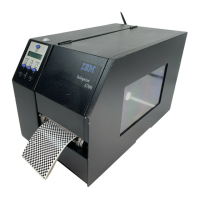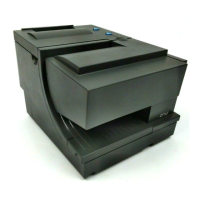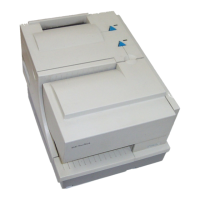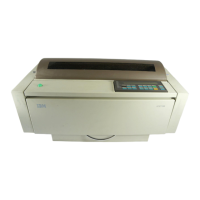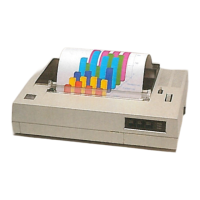50
Chapter 4 CMX Controller Board
controller and the MECA ASIC provide the functionality of three separate
processors used in earlier controller board architectures. In this manual, the
80C166 is referred to as either the EC or the 166.
The 166 used on the CMX board runs at 20MHz and is housed in a 100-pin
metric rectangular flat pack.
Bus Configuration
The 166 bus is configured for 18-bit address, 16-bit data, non-multiplexed and
segmented operation. The flash memory runs with zero wait states. An
external PAL is used for address decoding.
Power Reduction
The 166 chip has two power reduction modes: idle and Energy Star. Idle
mode is not used. In Energy Star mode, +48V and all motors are de-
energized, but the 166 operates as normal.
EC Flash Memory
The EC stores all boot code, program code, and tables in its own local flash
memory. This flash is organized as 64K x16 bits and uses the same
technology as the DC flash: it is +5.0V-only and is rated for a minimum of
100,000 write/erase cycles. EC memory is fixed; it is soldered to the controller
board. Its contents can be updated through the DC (through the serial or
parallel ports). At run time, the EC also stores tables in shared DRAM, which
is accessed through the Cajun bus.
MECA ASIC
The 166 uses numerous counters, PWM generators, and FIFOs in the MECA
to control many printer motor functions. The MECA is a custom gate array,
specifically designed to drive this system.
Analog Drive Circuitry
The analog drive functions convert 48 and 8.5 volts into the power used to
drive the motors and hammers in the printer. Sensors are used to monitor the
operation and status of critical components within the printer.
The printer uses five motors: two ribbon drive, one paper feed, one platen
open, and one shuttle motor. The shuttle motor is a brushless DC motor
driven by current control. The MPU encoder is used as feedback for motor
commutations, hammer fire timing, and motor stall detection. The paper feed
motor is a DC stepping motor driven by current control. The paper feed motor
may be driven in full, half, or microsteps, depending on print requirements.
The ribbon system uses two DC stepping motors that alternate drive and drag
roles when the ribbon reaches turnaround. The drive ribbon motor is
microstepped in voltage mode, while the drag motor is loaded and monitored
to maintain correct linear speed and tension. The platen motor is driven in
current mode and can be full or half stepped. The overall current level may be
reduced for standby modes.
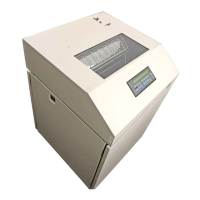
